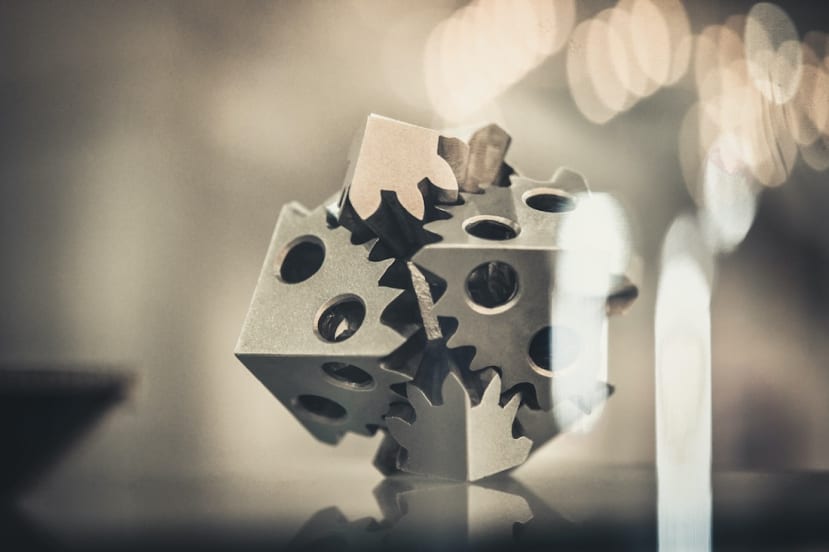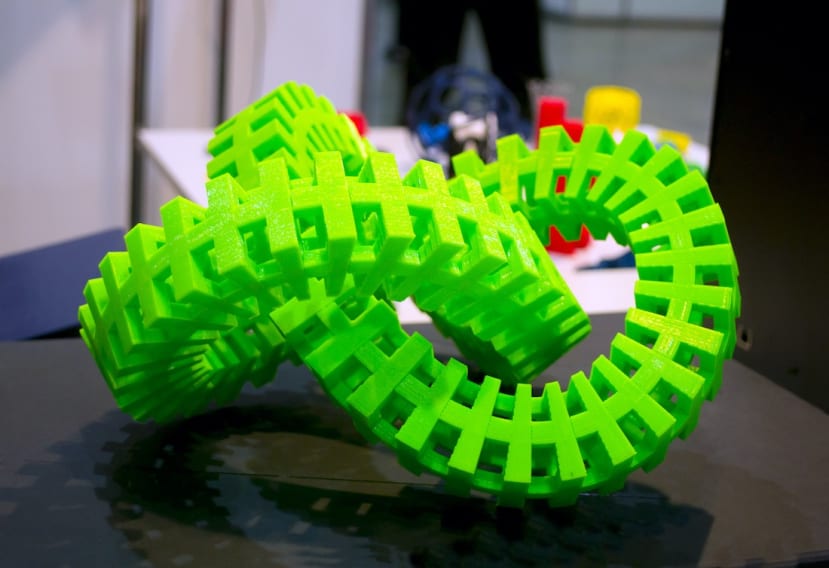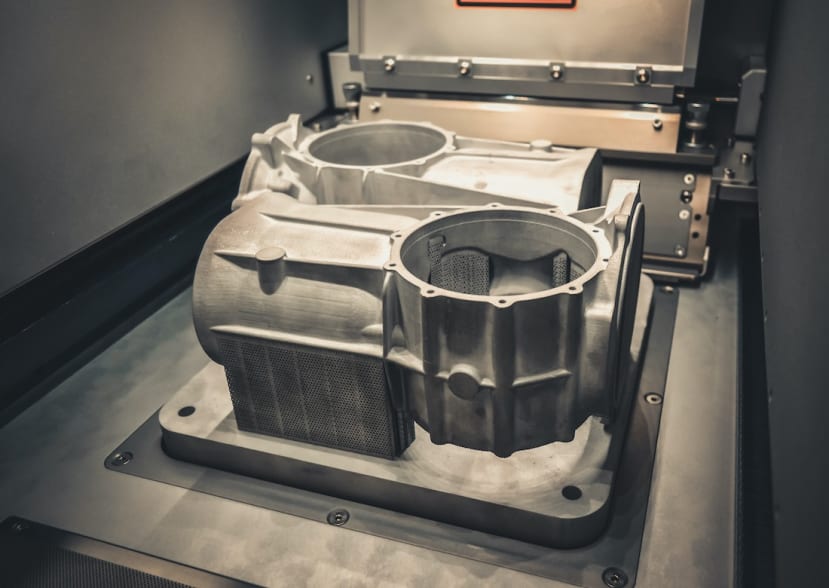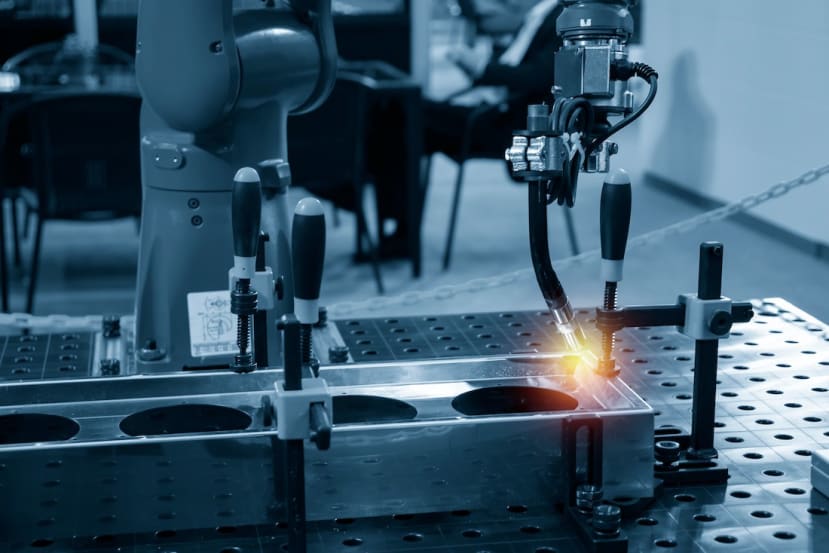What engineers need to know about additive manufacturing
Follow articleHow do you feel about this article? Help us to provide better content for you.
Thank you! Your feedback has been received.
There was a problem submitting your feedback, please try again later.
What do you think of this article?
Additive manufacturing is a transformational technology that presents so many exciting possibilities for design engineers. In recent years, it has evolved from producing low-grade polymer parts into a concept that can deliver prototype and usable components in advanced materials, including metals.
The ability to build up parts by printing allows for new levels of topological optimization, making it possible to create more complex internal structures that could not be achieved through traditional subtractive methods. This article will explain some of the leading terms and technologies associated with additive manufacturing while looking at how it might develop in the future.
The birth of additive manufacturing
The historical development of additive manufacturing stretches back longer than many people might think. Its roots can be traced to the early 1980s when the term stereolithography was used to describe a means of curing a liquid polymer resin by ultra-violet lasers.
Since then, the additive manufacturing process has seen constant innovation, with new techniques and printing materials coming to the fore. Machines have become smaller and cheaper, making them far more accessible to a broader range of organizations. The application of printed parts has also been expanded into sectors such as aerospace, medical, transportation and consumer goods.
So, additive manufacturing remains an exciting technology. Below are five important additive manufacturing techniques – some tried and tested, others newer to market – which continue to deliver:
Selective laser sintering (SLS) employs lasers to melt powders to form 3D objects. It has enduring popularity as a cost-effective means of producing polymer parts for industrial uses. The latest systems are using new CO2 and fibre lasers to provide more controllable energy distribution to the material, resulting in faster sintering, greater accuracy, and finer resolution. Another advance sees the development of machines that can print two different materials – one for support, one for printing. This approach could lead to further reductions in the cost of SLS. New materials are also being developed, allowing the creation of flame-retardant composites suitable for the aerospace sector.
Fused deposition modelling (FDM) was invented and trademarked by Stratasys in the late 1980s and is based on the concept of using a controller head to melt thermoplastic filaments and build them layer-by-layer from the bottom up to a pattern generated from CAD/CAM files. When exposed to the environment, the melted filament instantly sets into a solid as part of the cooling process. The process has been refined to work using a broad range of thermoplastics which have been optimized for factors such as toughness, translucence, and biocompatibility. The development of these materials means FDM is now commonly used to make proof-of-concept prototypes and simple, lightweight industrial parts.
Direct metal laser sintering (DMLS) uses a laser to melt granular aluminium or titanium powders to make fully functioning metal parts, often with high strength-to-weight ratios and complex internal geometries. This approach lends itself well to the production of low-volume, intricate structures primarily for aerospace and automotive – particularly, for example, in Formula 1 to make aerodynamic inserts and exhaust systems. It is also finding increasing application in the jewellery sector to produce parts in precious metals such as gold. Here, DMLS helps the jewellery designer to produce geometries that would not be possible with other techniques. There are downsides, though: DMLS is a comparatively expensive technology to own and operate, driven by high-energy costs and the base material's value.
Material jetting makes use of a print head positioned above a build platform, on to which tiny droplets of material are placed – a 3D version of an inkjet printer, almost. As these droplets solidify to form a layer, the process is repeated to build up the structure. UV light is then applied to cure the layers, with post-processing resulting in the removal of support material. Material jetting was developed in the late 1990s and has emerged as a proven means of producing detailed and functional prototypes. One interesting application in the healthcare sector is the creation of anatomical models to the same dimensions as found in the human body. This approach helps medics explain physiological problems visually and allows surgeons to train for surgery in advance.
Wire and arc additive manufacturing (WAAM) uses a directed energy deposition technique whereby metal wire is melted using an electric arc as the heat source. Using standard wire and welding equipment to focus thermal energy to fuse materials at high rates by melting as they are deposited, WAAM can be used to create near-net-shaped pieces to large dimensions. Researchers have previously used the technique to create a one-piece, six-metre long, 300kg, double-sided spar made from aerospace-grade aluminium. This is an emerging approach, which has been the focus of intense research and development efforts within academia with to move it towards commercialization. However, technical challenges include achieving acceptable methods of dimensional accuracy and overcoming the poor surface finish of manufactured parts.
In conclusion: There is clearly an enormous amount of activity in the additive manufacturing sector, with these varying techniques provide the design engineer with a host of options. Looking to the future, additive processes are likely to be deployed in ever-more interesting ways. For example, in the era of more smarter connected manufacturing environments, expect to see additive machines become more closely integrated with other production systems on the factory floor.
The role of artificial intelligence is another exciting area of development. Vision systems are already being deployed within additive machines to generate topological maps of material layers after deposition. The resultant data can then be fed into machine learning algorithms to give the printer learned intelligence about the properties of a particular material and its behaviour. This could result in the creation of ever-more accurate parts.
The future is bright, then. And as more companies move from using additive manufacturing as a means of prototyping through to its application for series production, a whole host of new business models are likely to open. Additive manufacturing, it would seem, still has a long and fascinating journey ahead of it.






